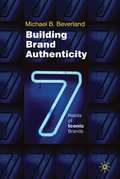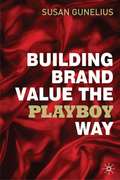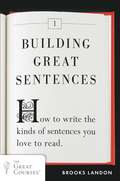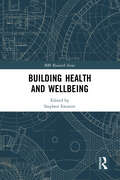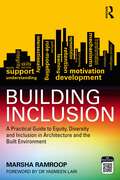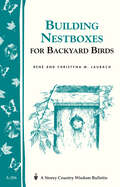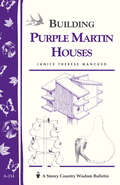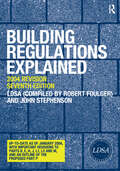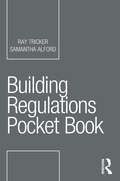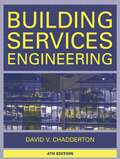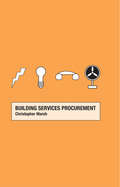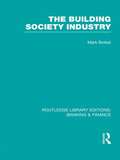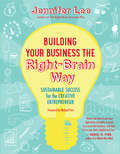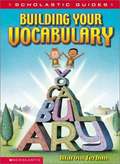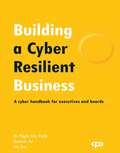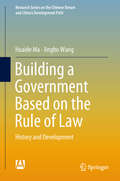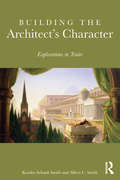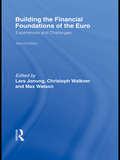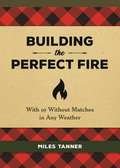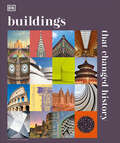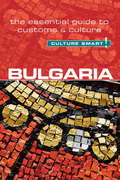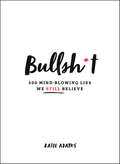- Table View
- List View
Building Brand Authenticity
by Michael BeverlandState of Our Unions 2009 seeks to answer the following questions: How is the Great Recession affecting the institution of marriage, as measured by changes in marriage and divorce rates in the United States? How do family finances---especially credit card debt and family assets---shape the quality and stability of contemporary married life in America? What does evolutionary psychology and the contemporary study of finance have to tell us about the best division of financial labor for husbands and wives? Is the Great Recession likely to foster egalitarian relationships between husbands and wives?
Building Brand Value the Playboy Way
by Susan GuneliusWith $8000 and a dream to create a men's lifestyle magazine that he would like to read, Hugh Hefner put together the first issue of Playboy magazine on his kitchen table. Over half a century later, Playboy has grown to become one of most well known brands in the world, and Hefner remains the face of the brand and the ultimate brand champion. Susan Gunelius uncovers how a brand associated with sex survived and thrived despite attacks from every direction, in an increasingly competitive market and jaded consumers. For over 50 years, Hugh Hefner has lived the Playboy brand promise, and Playboy has become one of the most recognized brands in the world. It's a fascinating story of determination, dedication and belief in a product. It's the story of brand building, brand value, brand longevity and the ultimate brand champion.
Building English Skills 9th Grade (Orange Level)
by Staff of The Writing Improvement ProjectComposition and Grammar textbook
Building Great Sentences
by Brooks LandonBased on the bestselling series from The Great Courses, Building Great Sentences celebrates the sheer joy of language--and will forever change the way you read and write. Great writing begins with the sentence. Whether it's two words ("Jesus wept. ") or William Faulkner's 1,287-word sentence in Absalom! Absalom!, sentences have the power to captivate, entertain, motivate, educate, and, most importantly, delight. Yet, the sentence-oriented approach to writing is too often overlooked in favor of bland economy. Building Great Sentences teaches you to write better sentences by luxuriating in the pleasures of language. Award-winning Professor Brooks Landon draws on examples from masters of long, elegant sentences--including Don DeLillo, Virginia Woolf, Joan Didion, and Samuel Johnson--to reveal the mechanics of how language works on thoughts and emotions, providing the tools to write powerful, more effective sentences. .
Building Health and Wellbeing (BRI Research Series)
by Stephen EmmittThis book focuses on the relationship between buildings and our health and wellbeing, and by extension our quality of life. Expanding on the 50th anniversary special issue of Building Research & Information (BRI), which was dedicated to health and wellbeing, articles have been extended and updated to complement contributions from new authors. Building Health and Wellbeing covers design for aging, energy poverty and health, productivity and thermal comfort in offices, housing space and occupancy standards and much more. The aim is to explore the inter-relationship between people and our buildings. Chapters are supported with new case studies to illustrate global approaches to a common challenge, while demonstrating local strategies to suit different climates. The content covers housing, offices, and healthcare facilities and the unique aspect of the book is the people perspective, providing outlooks from different age groups and users of buildings. It will act as an important reference for academics in the built environment and healthcare sectors.
Building Inclusion: A Practical Guide to Equity, Diversity and Inclusion in Architecture and the Built Environment
by Marsha RamroopBuilding Inclusion: A Practical Guide to Equity, Diversity and Inclusion in Architecture and the Built Environment is just that – a manual to support and provide essential guidance to the profession on these key issues. Acknowledging that the existence of EDI procedures does not necessarily ensure their use, it focuses on demonstrating behaviours that help create, implement and enforce policies, procedures and practices to deliver inclusion.Written by Marsha Ramroop, former inaugural EDI Director at the RIBA and award-winning EDI strategist, the book targets the pain points of talent attraction and retention, public sector procurement, community engagement and inclusive design. It utilises case studies from organisations across the sector and the world with successful EDI practices, as well as testimonials of lived experiences of discrimination which provide important insight to the reader. The book takes an intersectional approach, considering not just the separate identities of race, ethnicity, nationality, age, gender and sexual identity, disability, neurodiversity and class but the overlap of these.Clearly written and accessible, with key points at the end of each chapter, this book is essential reading for those in the profession seeking to implement EDI practices in their work and workplace.
Building Life Skills
by Louise A. Liddell Yvonne S. GentzlerProvides information and guidelines for life skills in such areas as time management, money, child care, and cooking.
Building Life Skills
by Louise A. Liddell Yvonne S. GentzlerBuilding Life Skills gives the tools you need to manage your life and helps you develop skills throughout your life. It contains eight parts and each part helps you develop different skills to build a satisfying life now and in the future. They help exploring relationships, managing time, understanding children, improving health and nutrition, selecting and preparing a variety of foods, caring for clothes, caring for home, improving leadership skills and career possibilities.
Building Nest Boxes for Backyard Birds: Storey's Country Wisdom Bulletin A-206 (Storey Country Wisdom Bulletin Ser.)
by Christyna M. Laubach René LaubachThis concise guide offers easy-to-follow, step-by-step instructions for building eight different nestboxes. Each nestbox is designed to attract and house different kinds of backyard birds, including bluebirds, swallows, wrens, chickadees, nuthatches, Red-Bellied Woodpeckers, Northern Flickers, Wood Ducks, Hooded Mergansers, American Kestrals, Screech Owls, Northern Saw-Whet Owls, and Great Crested or Ash-Throated Flycatchers.
Building Purple Martin Houses: Storey's Country Wisdom Bulletin A-214 (Storey Country Wisdom Bulletin Ser.)
by Janice Therese MancusoAttract and maintain a purple martin colony! Janice Mancuso shows you exactly how to do it. From finding the right site and choosing the best housing materials to constructing a martin house with suitable entrance holes and predator guards, you’ll find everything you need to know in this concise guide.
Building Regulations Explained
by John Stephenson London District Surveyors AssociationAlmost all buildings erected or altered in England and Wales must satisfy the requirements of the building regulations. This essential reference has been revised in line with new legislation up to January 2004, including important revisions to Parts B, E, H, J, L1, L2, and M and an outline of the proposed Part P.Each chapter explains in clear terms the appropriate regulation and any other legislation, before explaining the approved document. The Appeals and Determinations have been repositioned at the end of each chapter. Publications lists and relevant sources of information are also included, together with annexes devoted to legislation relevant to the construction industry, determinations made by the Secretary of State, and sample check lists.This highly illustrated and practical approach to the subject makes this the indispensable, one-stop reference guide for professionals and students.
Building Regulations Pocket Book (Routledge Pocket Books)
by Ray Tricker Samantha AlfordThis handy guide provides you with all the information you need to comply with the UK Building Regulations and Approved Documents. On site, in the van, in the office, wherever you are, this is the book you’ll refer to time and time again to double check the regulations on your current job. The Building Regulations Pocket Book is the must have reliable and portable guide to compliance with the Building Regulations. Part 1 provides an overview of the Building Act Part 2 offers a handy guide to the dos and don’ts of gaining the Local Council’s approval for Planning Permission and Building Regulations Approval Part 3 presents an overview of the requirements of the Approved Documents associated with the Building Regulations Part 4 is an easy to read explanation of the essential requirements of the Building Regulations that any architect, builder or DIYer needs to know to keep their work safe and compliant on both domestic or non-domestic jobs This book is essential reading for all building contractors and sub-contractors, site engineers, building engineers, building control officers, building surveyors, architects, construction site managers and DIYers. Homeowners will also find it useful to understand what they are responsible for when they have work done on their home (ignorance of the regulations is no defence when it comes to compliance!).
Building Services Engineering (2004)
by David ChaddertonBuilding Services Engineering fourth edition is an update and expansion to include web site learning resources. Several of the worked examples in Chapters 1-9, 12, 13 and 16 have been recalculated with new numbers. Carbon, greenhouse gas, emissions are explained and calculated for energy sources and energy saving retrofit projects in Chapter 2. Those who use this book to teach from have new numerical examples. Those who learn from this book have a refreshed set of worked examples. Both users can access additional similar worked examples and learning materials on the web site. Useful web site links further expand the practical scope available. Building Services Engineering fourth edition is intended to be a broad introduction to the range of subjects involved. The engineering content and calculation methods are sufficiently rigorous to match most of what is done within the industry during the design of many building services applications. The subjects covered and the depth to which they are analysed and calculated are more than sufficient to meet the syllabus requirements of higher technician, undergraduate and some postgraduate courses in building services engineering, heating, ventilating and air conditioning, energy management, architecture, building and quantity surveying, housing management, estate management and property facility management. Those preparing for clerk of works examinations will also find the book useful. The advanced user will need to progress to specialized text books and the standard references.
Building Services Procurement
by Christopher MarshProcurers and contractors increasingly need practical guidance for the strategic procurement of building services. Clients seeking to improve the delivery performance of the construction industry are increasingly using alternative procurement arrangements. These modern arrangements attempt to deliver a more strategic approach to achieving value for money. Yet little thought is ever given to the strategic importance of building services. No other single aspect of a project will affect project success more than the timely delivery of a fully functioning services installation. Beyond the normal considerations of time, cost and quality, building services have a series of unique requirements not normally considered. For the first time these unique requirements are combined in a single text, providing the reader with the definitive guide to building services procurement. The text reviews each of the major critical success factors and clearly explains the supporting processes that must be enacted to ensure success. It reviews the general nature of procurement systems and construction projects, and then explores the increasing importance that building services play both in the construction process and in determining success for the client. Each significant stage within the procurement process is explored by explaining its importance and showing what decisions need to be made to develop a cohesive strategy. It concludes by giving a step-by-step guide to clearly develop and implement a building services procurement strategy.
Building Society Industry (Routledge Library Editions: Banking & Finance)
by Mark J BoleatIn this book which has become the standard work on building societies, the author takes into account both economic and regulatory changes which took place in the late 1970s and early 1980s. The book is aimed primarily at students in the industry, and also those undertaking relevant undergraduate and postgraduate courses at university. In addition, this book will be invaluable to those working inside the building society industry and to those organizations which come into contact with societies.
Building Your Business the Right-Brain Way
by Jennifer Lee Kate PrentissGrow a Profitable and Lasting Business on Your Terms If you've started a business, you know that the journey toward success can be both invigorating and confusing, so where can you find advice that is practical and focused but still as playful and passionate as you are? Look no further than this book, which combines solid business expertise with a right-brain perspective that inspires creativity and innovation. Jennifer Lee's fresh, empowering approach emphasizes taking action and continually improving to achieve extraordinary long-term results. Building Your Business the Right-Brain Way offers real-world-tested techniques that can benefit all sorts of businesses, whether you're a sole proprietor running a coaching practice, a crafter looking to license products, a wellness professional with a team of employees, or any creative soul making a meaningful difference with your work. You'll discover how to: * assess your business's unique "ecosystem" * build your brand and attract, engage, and keep ideal customers * develop new income streams that better leverage your time and resources * promote your products and services with authenticity and ease * grow your team (virtual and in-person) and manage staff and vendors * establish infrastructure and procedures to keep operations running smoothly * carve out vital white space to pause, reflect, and celebrate Includes play sheets and color illustrations to inspire action and propel your success
Building Your Vocabulary (Scholastic Guides)
by Marvin Terban Eric BraceBUILDING YOUR VOCABULARY, the newest addition to the Scholastic Guide series, is an essential resource that provides children with skills they need in order to approach and learn new vocabulary words. <p><p> Using language arts standards from states around the nation as a guide, BUILDING YOUR VOCABULARY familiarizes kids with word origins, word parts, context clues, synonyms and antonyms, and other critical skills. Rather than a book of vocabulary lists to memorize, this title gives kids tools they can use throughout their lives. <p> Kids will discover that English is made up of words from many different languages. They'll also find out about eponyms--people and places that become words. <p> Next students will discover the meanings of common prefixes, suffixes, and roots so that they can approach new words more confidently. There are also sections on homonyms, word families, shades of meaning, dictionaries, and thesauruses. All in a fun and entertaining format.
Building a Cyber Resilient Business: A cyber handbook for executives and boards
by Shamane Tan Hai Tran Dr. Magda ChellyLearn how to build a proactive cybersecurity culture together with the rest of your C-suite to effectively manage cyber risksKey FeaturesEnable business acceleration by preparing your organization against cyber risksDiscover tips and tricks to manage cyber risks in your organization and build a cyber resilient businessUnpack critical questions for the C-suite to ensure the firm is intentionally building cyber resilienceBook DescriptionWith cyberattacks on the rise, it has become essential for C-suite executives and board members to step up and collectively recognize cyber risk as a top priority business risk. However, non-cyber executives find it challenging to understand their role in increasing the business's cyber resilience due to its complex nature and the lack of a clear return on investment.This book demystifies the perception that cybersecurity is a technical problem, drawing parallels between the key responsibilities of the C-suite roles to line up with the mission of the Chief Information Security Officer (CISO).The book equips you with all you need to know about cyber risks to run the business effectively. Each chapter provides a holistic overview of the dynamic priorities of the C-suite (from the CFO to the CIO, COO, CRO, and so on), and unpacks how cybersecurity must be embedded in every business function. The book also contains self-assessment questions, which are a helpful tool in evaluating any major cybersecurity initiatives and/or investment required.With this book, you'll have a deeper appreciation of the various ways all executives can contribute to the organization's cyber program, in close collaboration with the CISO and the security team, and achieve a cyber-resilient, profitable, and sustainable business.What you will learnUnderstand why cybersecurity should matter to the C-suiteExplore how different roles contribute to an organization's securityDiscover how priorities of roles affect an executive's contribution to securityUnderstand financial losses and business impact caused by cyber risksCome to grips with the role of the board of directors in cybersecurity programsLeverage the recipes to build a strong cybersecurity cultureDiscover tips on cyber risk quantification and cyber insuranceDefine a common language that bridges the gap between business and cybersecurityWho this book is forThis book is for the C-suite and executives who are not necessarily working in cybersecurity. The guidebook will bridge the gaps between the CISO and the rest of the executives, helping CEOs, CFOs, CIOs, COOs, etc., to understand how they can work together with the CISO and their team to achieve organization-wide cyber resilience for business value preservation and growth.
Building a Government Based on the Rule of Law: History and Development (Research Series on the Chinese Dream and China’s Development Path)
by Jingbo Wang Huaide MaThis book offers a comprehensive assessment of the successes and failures in China’s current legal system construction. It systematically and comprehensively examines the development of China’s rule of law policy since the reform and opening up, as well as future trends. The main areas covered include: The course, achievements and motivation behind China’s construction of law-based administration; Development, status quo and general characteristics of administrative legislation; Reform of the administrative examination and approval system and the administrative licensing system; The relationship between social security system reform, beneficial administration and service government; The development of administrative law in China; Origin of the concept of due process, experiences with and development trends concerning China’s administrative legislative procedure; The importance of government information, open practices, problems and development trend; History, current situation, reform mechanism of the emergency management system and the improvement of the legal system for emergency requisitions; The course, practical problems in and reasons for the enhanced approach of administrative reconsideration system; The course, achievements in, current situation and enhanced approach of administrative litigation system; The course of the national compensation system; and the construction of responsible government and administrative accountability system.
Building the Architect's Character: Explorations in Traits
by Albert C. Smith Kendra Schank SmithAn understanding of architects’ character traits can offer important insights into how they design buildings. These traits include leadership skills necessary to coordinate a team, honest and ethical behavior, being well educated and possessing a life-long love of learning, flexibility, resourcefulness, and visionary and strategic thinking. Characteristics such as these describe a successful person. Architects also possess these traits, but they have additional skills specifically valuable for the profession. These will include the ability to question the use of digital media, new materials, processes, and methods to convey meaning in architectural form. Although not exhaustive, a discussion of such subjects as defining, imaging, persuading, and fabricating will reveal representational meaning useful for the development of an understanding of architects’ character. Through the analogies and metaphors found in Greek myth, the book describes the elusive, hard-to-define characteristics of architects to engage the dilemmas of a changing architectural landscape. Building the Architect’s Character: Explorations in Traits examines traditional and archetypal characteristics of the successful architect to ask if they remain relevant today.
Building the Financial Foundations of the Euro
by Lars JonungFirst Published in 2008. Routledge is an imprint of Taylor & Francis, an informa company.
Building the Perfect Fire: With or Without Matches in Any Weather
by Miles TannerDon't get left out in the cold! A definitive guide to the essential skill of setting, lighting, and maintaining a blaze both indoors and out. This go-to-guide for turning wood into heat, including starting a fire with everything from flints to forearms in any type of weather; tinders easily found in nature; identifying and gathering the best kindling and types of wood; efficient splitting and stacking configurations for different needs, such as cooking; and how to safely put out a blaze. Not just for survival, Building the Perfect Fire will also discuss using wood to create a welcoming fire, such as the crackling from birch wood or the colorful flames from an old apple tree.
Buildings that Changed History (DK History Changers)
by DKExplore the world's most fascinating historical and contemporary buildings, from ancient pyramids to high-tech skyscrapers, in this essential guide to architecture. Buildings That Changed History gives you an overview of the history of architecture from the ancient world to the present day. It takes you on guided tours of more than 50 masterpieces of every architectural style, from the Great Pyramid of Giza to Chartres Cathedral, Sydney Opera House, and the Guggenheim Museum in Bilbao. Each building is analyzed visually. CGI cutaway artwork peels away roofs and walls to reveal the bones of the building, and close-up photographs home in on details of style. Buildings That Changed History takes a truly global look at both historical and contemporary architecture. It shows you how to "read" buildings and figure out when they were constructed. What is the difference between a Doric and an Ionic column? How does a flying buttress work? Why do concrete balconies appear to float in thin air? You will find the answers here, along with a wealth of intriguing stories about the patrons, builders, and architects who made each architectural masterpiece possible. Reading Buildings That Changed History is like being taken on a personal tour by a guide who shows you exactly what to look at.
Bulgaria - Culture Smart!
by Juliana TzvetkovaBulgaria, situated in southeastern Europe on the Black Sea, is one of Europe's best-hidden secrets. A haven for nature and history buffs, this beautiful sunny country welcomes the traveler with bread and salt, a red rose, and а wooden vessel full of sparkling wine. These three emblems of ancient treasures, rose oil, and natural beauty symbolize its distinctive culture. This youngest member of the European Union has been riding a roller-coaster of radical transformation since emerging from the Eastern Bloc and becoming a market economy twenty years ago, changing dramatically in many ways and yet preserving its own particular charm and slow-paced way of life. Invasions and waves of migration, dating back to neolithic and classical times, have contributed to a unique cultural mosaic. The country boasts the oldest hoard of gold treasure in the world. The seventh-century Bulgarian empire dominated the Balkans and was a powerhouse of Slavonic culture. Later, Ottoman conquest and Soviet influence left their mark on the national psyche. Culture Smart! Bulgaria provides a key to understanding the Bulgarian people. It outlines their long and complex history, shows you what everyday life is like there today, and offers advice on what to expect and how to behave in different circumstances. This is a small country of proud and persevering people. More than the golden sands of the "Bulgarian Riviera," the vast thickly forested expanses of the Rhodopes or the Rila and Pirin ranges with their snow-capped peaks and emerald-green lakes, the music and dances and the warmth and cordiality of the Bulgarians will conquer your heart and bring you back time and again.
Bullsh*t: 500 Mind-Blowing Lies We Still Believe
by Katie AdamsCompelling trivia for our age of disinformationAmerican culture is awash in lies. Despite the fact that we have the truth at our fingertips at all times, Americans still believe lies about everything from health to politics to science to business. Kate Adams's clever trivia book debunks the 500 most common untruths and shows readers why we are all so susceptible to misinformation, and also includes a chapter on facts that are true, but seem like bullsh*t.Sample Lies:Left and Right BrainThere’s no solid division between hemispheres; the left brain can learn “right-brain skills” and vice versa.Three Wise MenNowhere in the Bible does it specify that there were three.Flush RotationA flushed toilet doesn’t drain the other way in the opposite hemisphere. The Coriolis effect doesn’t apply to water in toilets.Einstein was a terrible student and failed mathematics.Albert Einstein actually aced his report cards. His reputation for being a notoriously terrible student? That came from his habit of talking back to his teachers when he felt they were acting too authoritarian.Sample Facts that Seem Like Bullsh*t:A day on Venus is longer than a year.A chicken lived without a head for 18 months.Human children don't get kneecap bones until they're around three years old.A mantis shrimp can punch with the force of a 22-caliber bullet.
